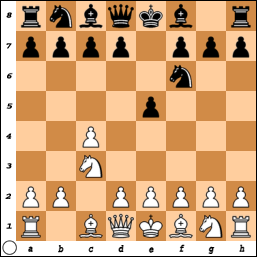
From here, White can try a few different moves, but each one has a drawback.
a) 3.g3 -- here, I think that Black's most accurate move is 3..c6! Now 4.d4 ed 5.Qxd4 d5 has been tried in many games and seems fine for Black (Kosten's excellent book on the English recommends delaying Nc3 in part because of this line). If White tries 4.Nf3, then Black can play 4..e4 5.Nd4 d5 6.cd Qb6!?
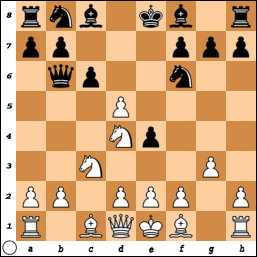
This is never played with colors reversed (1.e4 c5 2.c3 Nf6 3.e5 Nd5 4.Nf3 Nc6 5.d4 cd 6.Qb3), presumably because ..e6 would be a good response. From the diagram, if White plays 7.e3, it is clear that the extra move g3 is actually detrimental. If instead 7.Nb3, then Black can gain the initiative with 7..a5!, threatening to trap the knight. This was recently played by Bacrot, and looks pretty strong. Therefore, instead of 3.g3, most people play 3.Nf3 Nc6, with another split:
a) 4.g3 Bb4 (4..d5 is also surprisingly hard to get an advantage against). White would love to play 5.Nd5, but Black responds with 5..e4, and the extra move Nf3 is suddenly a drawback. So most games continue with 5.Bg2 0-0, reaching a well-known position. I can't begin to do this line justice in the space I have here, but it does score well for black and I'm not particularly inclined to play it as White.
b) 4.e3 Bb4 5.Qc2 Bxc3!? 6.Qxc3 Qe7!.
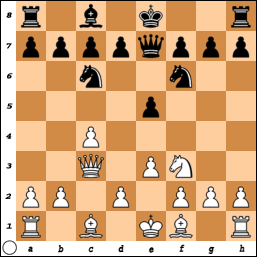
I'm astounded at how annoying this move is -- my computer actually thinks that Black has a slight advantage here, and while I'm not sure about that, I think it is fair to see that equality has been achieved. Basically, Black will play ..d5, White's queen will get kicked around, and Black's lead in space and development will be enough to counter the bishop pair. So why can't White players try the same thing in reverse, as an anti-Taimanov line? Essentially, because the Black knight is still on g8, and thus 1.e4 c5 2.Nf3 e6 3.Nc3 Nc6 4.Bb5 can be met with either 4..Nge7 or the immediate 4..Nd4. If an enterprising White player tries to waste a tempo with something like 4.a3, then Black can simply respond with 4..a6, which is part of his plan in the Taimanov anyway. Speaking of a-pawn pushes:
c) 4.a3 d5 (4..g6 is also playable and roughly equal, because the a3 move becomes useless) 5.cd Nxd5, and we reach our final split:
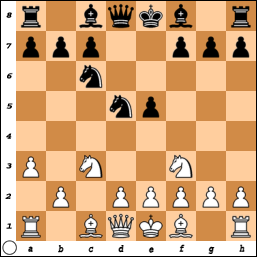
i) 6.Qc2 Nxc3!? 7.bc Bd6 8.g3 Qe7(!) 9.d3 b6 has done pretty well for Black. White probably wishes the a-pawn was back on a2.
ii) 6.e3 Nxc3 7.bc Bd6 is similar. I always enjoyed playing White in these positions with colors reversed, and I would rather play Black here, although it's a matter of taste.
iii) 6.e4 Nf4!? 7.d4 ed 8.Bxf4 dc
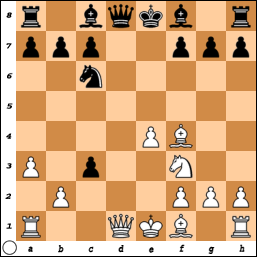
Now 9.Qxd8+ Nxd8 10.bc Ne6 is not what we want as White. With colors reversed, Black usually takes the pawn back immediately, but here, 9.bc gives Black the extra option of 9..Qxd1+, and all of a sudden recapturing with the rook leaves the a3 pawn en prise. Curse you, extra move! To be fair, White can recapture on c7, but the position isn't very inspiring.
So there you have it, a peripheral look at what everyone knows already: the reversed Sicilian seems fine for Black.

5 comments:
There must be a reason that you are not considering 1. c4 Nf6 2. Nf3, right?
Keeping in mind that I have no book knowledge of the English at all, it seems like in your lines that if Black wants to enter the reversed sicilian then either Nc6 or d6 would be a concession.
Hi Ellie,
You are right that Black cannot force a reversed Sicilian after 1.c4 Nf6 2.Nf3. My basic problem with this move order is that Black can instead play 2..c6 and force a Slav/Semi-Slav. I didn't include this in the post, but the reason I considered switching from 1.d4 to 1.c4 is that I'm having major problems finding a good line against these openings, which a lot of players use around here. In addition, White loses a little flexibility after 1.c4 Nf6 2.Nf3 e6 3.Nc3 d5 4.d4, when Black can either play 4..Be7 having avoided the most dangerous lines of the exchange variation, or 4..Bb4, which is also very popular and tough to gain an edge against.
This is not the end of the world for White, especially if you have already prepared for these lines in your 1.d4 repertoire. And it is probably a rare player who plays both these lines and the reversed Sicilian. But I do feel that from a theoretical perspective, the best independently "English" tries after 1.c4 Nf6 arise from 2.Nc3 (i.e. 2.Nc3 e6 3.e4!?, or 2.Nc3 c6 3.e4). If I have to go to 1.c4 Nf6 2.Nf3, then I'd rather play 1.Nf3 or 1.d4 on the first move.
1. c4 loses to 1... f5!
Play 1. e4 Charles, it's the only way to gain an advantage.
(Semi-tongue-in-cheek)
-Matt
It's the "semi" part that scares me.
Anyway, Korchnoi wrote something to the the effect that there was no such thing as a theoretical advantage for white if one looked deeply enough, so perhaps I'll stop being Quixotic and play the English after all. :)
I guess since I play the Accelerated Dragon as black I don't get all hot and bothered by a reverse Sicilian set up against my English. Though my main gripe with the English is not always having a decent square for the c1 bishop.
Post a Comment